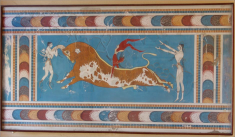Speaker
Description
The neutron time-of-flight (n_TOF) facility of CERN, based on an idea by C. Rubbia et al., became operative in 2001 and since then it occupies a major role in the field of neutron cross-section measurements. Neutron-induced reactions play a key role in several aspects of nuclear physics, from nuclear technology, where they enter in reactor calculations and design, to nuclear astrophysics and to nuclear structure.
At n_TOF a pulsed neutron beam is produced by spallation of 20 GeV/c protons on a lead target, and used together with a moderation system. In this way the n_TOF neutron beam covers about eleven orders of magnitude in energy from thermal to GeV in the first experimental area (EAR1), and from milli-eV to hundreds of MeV in the second experimental area (EAR2). The broad neutron energy range, together with the high intensity instantaneous neutron flux and the very good energy resolution makes the n_TOF facility perfectly suited to perform high-quality measurements of neutron-induced reaction cross sections.
The characteristics and performance of the two experimental areas of the n_TOF facility will be presented, together with the physics program of the n_TOF Collaboration and selected important measurements performed to date. In addition, significant upcoming developments will be introduced, both from the neutron beam production and neutron detection point of view.
